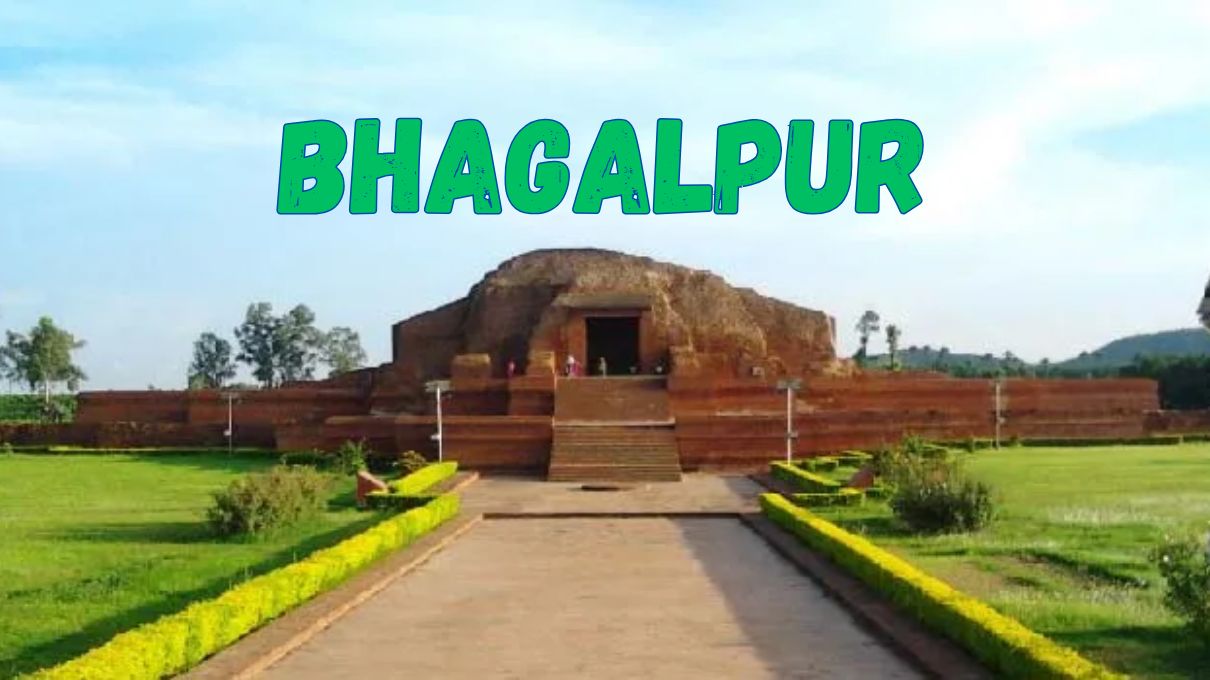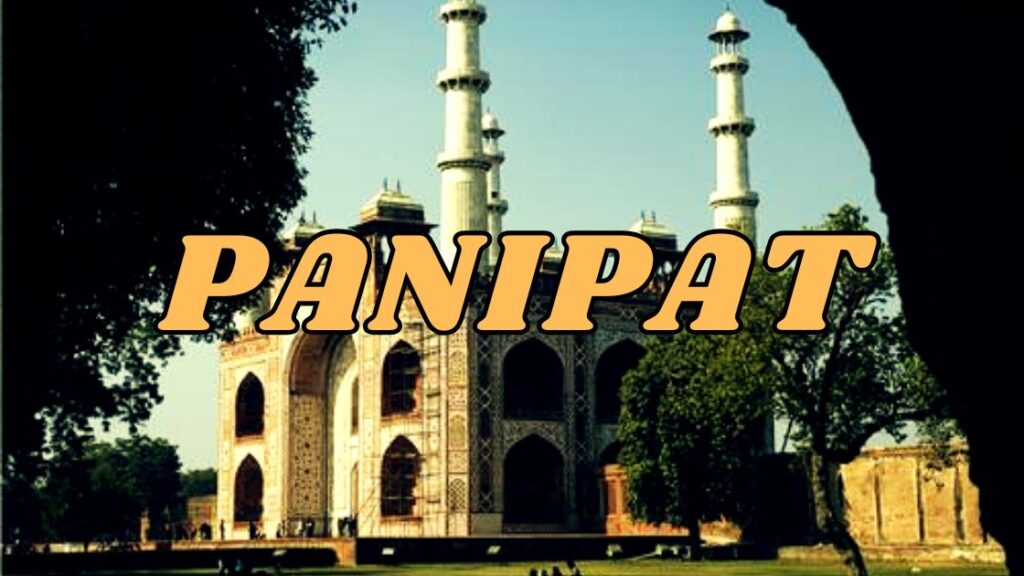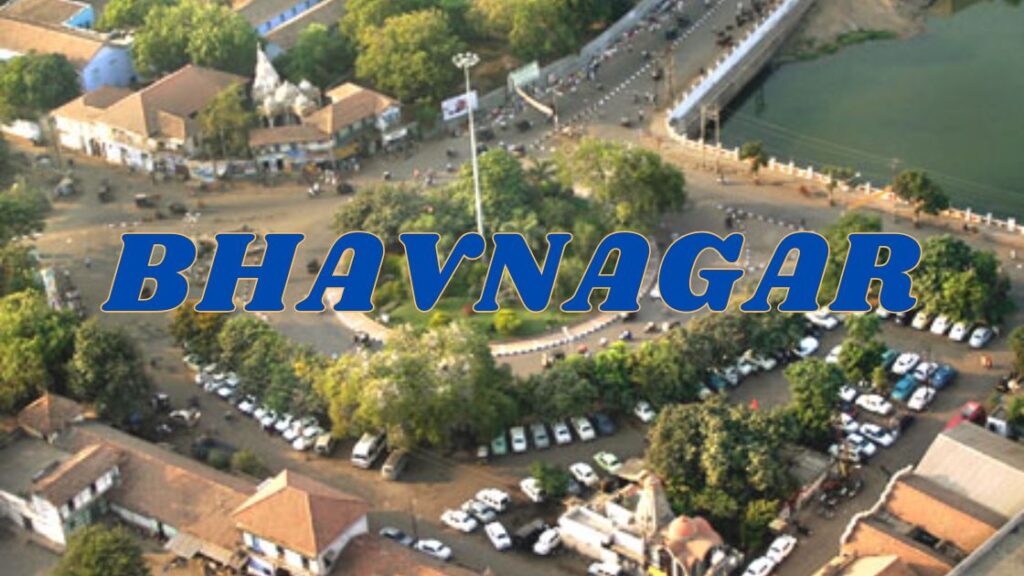All about Bhagalpur
Bhagalpur, historically recognized as Champa Nagri, is a city steeped in heritage and emerging as a hub of growth in the Indian state of Bihar. Nestled along the southern bank of the Ganges River, this city boasts not only cultural and historical significance but also modern infrastructural advancements. With a population making it the third-largest city in Bihar, Bhagalpur serves as the headquarters for Bhagalpur district, Bhagalpur division, and the Eastern Range.
Famously referred to as the Silk City, Bhagalpur has long been renowned for its production of high-quality silk fabric, a craft deeply rooted in its heritage. The Government of India has recognized its potential and has included the city in the Smart Cities Mission, emphasizing its importance in India’s urban development plans. Bhagalpur is distinctive within Bihar for being one of only two districts (alongside Patna) to host major educational institutions, further solidifying its role as an academic hub.
Bhagalpur: Bihar’s Silk City, Historical Treasure
These institutions include the Indian Institute of Information Technology (IIIT Bhagalpur), Jawaharlal Nehru Medical College, Tilka Manjhi Bhagalpur University (TMBU), and Bihar Agricultural University (BAU). Moreover, the construction of the Vikramshila Central University is underway near the historic ruins of the Vikramshila Mahavihara, which stands as a testimony to the region’s illustrious past.
Transportation in Bhagalpur is significantly supported by the Bhagalpur Railway Station, which connects the city to various parts of the country. The city’s proximity to the Ganges River adds an ecological edge to its appeal. The waters around Bhagalpur are home to the Gangetic Dolphin, which is recognized as the National Aquatic Animal of India. To protect and preserve this species, the Vikramshila Gangetic Dolphin Sanctuary has been established near the town, making it a key site for ecological tourism and conservation efforts.
Bhagalpur’s cultural fabric is equally captivating, with traditions and festivals that reflect the spirit of the region. The city hosts the largest Manasa Puja in India, a vibrant celebration that attracts devotees from far and wide. In addition, Bhagalpur organizes one of the grandest processions for Kali Puja, marking it as an intangible cultural heritage of the area. These festivals underscore the unity and devotion of the community while showcasing the city’s rich traditions to the rest of the world.
In conclusion, Bhagalpur stands at the crossroads of history and progress. It bridges its glorious past, marked by its silk production and ancient educational prominence, with a forward-looking vision as a part of India’s Smart Cities initiative. The blend of natural beauty, cultural vibrancy, and infrastructural advancement positions Bhagalpur as not only a significant city in Bihar but also a promising hub for development in India.
Climate of Bhagalpur
The climate of Bhagalpur is classified as tropical wet and dry, characterized by three primary seasons: summer, monsoon, and winter. The India Meteorological Department has extensively recorded climatic trends for Bhagalpur, providing valuable insights into its weather patterns over decades.
Summers (March to June) in Bhagalpur are typically hot, with temperatures ranging between 32.8°C to 46.4°C. April and May are the hottest months, often experiencing record-breaking temperatures, such as 46.4°C, which was observed in May 2020. These high temperatures can create challenging living conditions, but the Ganges and surrounding green cover provide some relief.
The monsoon season (July to September) dominates with heavy rainfall, contributing to an average annual precipitation of approximately 1,161.6 mm. July and August are the wettest months, with 294.5 mm and 239.1 mm of rainfall, respectively. The frequent rainfall revitalizes the agricultural sector, ensuring ample water supply for irrigation. However, excessive monsoon rains occasionally lead to flooding in low-lying areas, posing risks to life and infrastructure.
Winters (December to February) are relatively mild and pleasant, with temperatures ranging from 4°C to 15°C. The city records its lowest temperatures in January, making it an ideal time for outdoor activities and tourism. The relative humidity during winter hovers around 73%, adding a slight chill to the air.
Climatic Data (1991–2020)
The city experiences significant temperature variations, with record highs such as 46.4°C and record lows touching 3.9°C during extreme winters. The relative humidity averages around 67%, ensuring moderate comfort levels throughout the year. Bhagalpur sees an average of 56.6 rainy days annually, with rainfall concentrated during the monsoon season.
This balanced climatic profile supports Bhagalpur’s rich biodiversity and agricultural productivity. The consistent availability of natural resources has earned it the reputation of being an ecologically sensitive region that harmoniously blends urban and rural characteristics.
Flora and Fauna of Bhagalpur
Bhagalpur is a region blessed with rich biodiversity, much of which is shaped by its geographical proximity to the Ganges River and the surrounding alluvial plains. The combination of fertile soil, abundant water, and a moderate climate makes the area a thriving habitat for diverse flora and fauna, many of which hold ecological, cultural, and historical significance.
The flora of Bhagalpur is characterized by tropical vegetation, including deciduous forests, which host species such as sal, teak, mahogany, and neem. Along the riverbanks and wetlands, the landscape is dotted with aquatic plants, grasses, and reeds that play a vital role in maintaining the region’s ecosystem. These natural resources not only support the local fauna but also form the backbone of agricultural practices in the area.
Bhagalpur’s fauna is equally remarkable, featuring species that are rare, endangered, and culturally revered. Among the most significant inhabitants are the Gangetic Dolphins, an endangered species recognized as India’s National Aquatic Animal, and the iconic Greater Adjutant Stork, locally referred to as “Garuda.”

The Greater Adjutant Stork (Garuda): A Symbol of Conservation
The Greater Adjutant Stork (Leptoptilos dubius) holds a special place in Bhagalpur’s natural history. Revered as the mythical bird Garuda, this member of the stork family is both ecologically and culturally significant. The Rescue and Rehabilitation Area in Bhagalpur is the second-largest sanctuary for this species worldwide, underscoring the city’s role in global conservation efforts.
Historically, the greater adjutant faced severe challenges due to habitat loss, pollution, hunting, and egg collection, leading to a dramatic decline in its population. However, the narrative began to change in 2007, when these stocks were first observed nesting and breeding on a silk cotton tree in the Ganga-Diara area of Bhagalpur. This event marked the first recorded breeding period for the species in Bihar.

In May 2006, a group from the Mandar Nature Club documented 42 greater adjutants, initiating awareness and conservation initiatives. Over the next few years, Bhagalpur became a critical site for these storks, with their population growing from 78 to over 500. Today, Bhagalpur is one of only three places globally—alongside Cambodia and Assam—to host these magnificent birds.
Description and Features
The greater adjutant stock is listed as endangered on the IUCN Red List (2004) and under Schedule IV of the Indian Wildlife (Protection) Act, 1972. Its distinctive appearance includes a naked pink head, a thick yellow bill, and a prominent low-hanging neck pouch. The bird has a white neck ruff, dark grey body, and pale grey edges on its wings, giving it a somewhat vulture-like appearance.
Young birds are characterized by a narrower bill, thicker down covering their head and neck, and entirely dark wings, distinguishing them from adults. A fully grown greater adjutant stands at an impressive height of four to five feet and measures 145–150 cm in length.
A Conservation Success Story
The revival of the greater adjutant population in Bhagalpur is a testament to the success of grassroots and governmental conservation efforts. Local organizations, along with the Mandar Nature Club, played a pivotal role in educating communities, protecting nesting areas, and minimizing human disturbances.
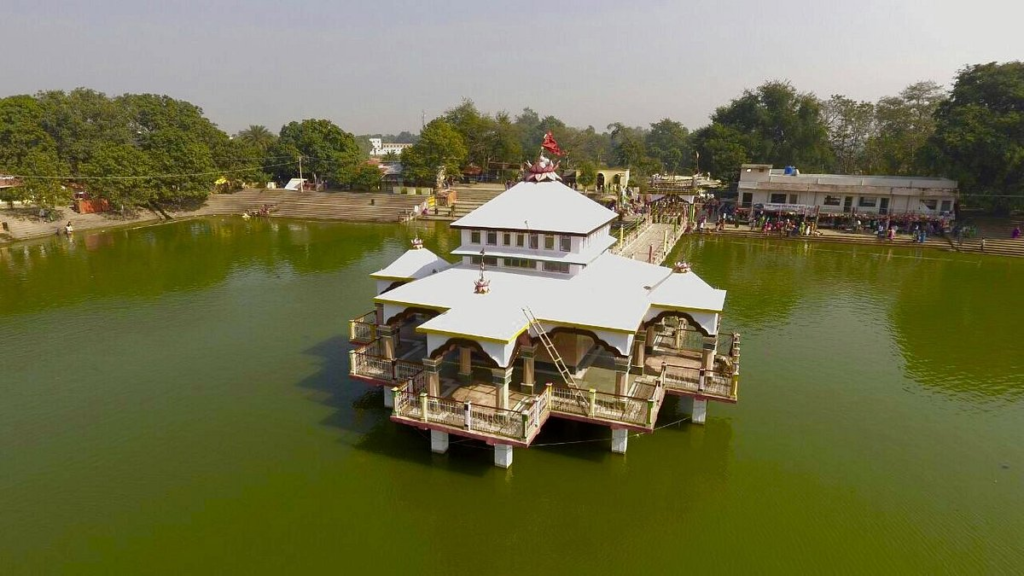
The presence of the greater adjutant has further elevated Bhagalpur’s status as an ecologically significant region, attracting researchers, ornithologists, and wildlife enthusiasts. This success story emphasizes the importance of collaborative conservation and Bhagalpur’s critical role in safeguarding endangered species.
Demographics of Bhagalpur: A Historical and Modern Analysis
Bhagalpur, often referred to as the Silk City of India, has witnessed a fascinating demographic evolution over the years. With its historical significance and modern advancements, the city remains one of the most notable urban centers in Bihar. The population trends and cultural diversity of Bhagalpur provide valuable insights into its social and economic framework.
Historical Population Growth
Bhagalpur’s population growth reflects the city’s transformation through centuries. As recorded in the District Census Handbook, the city’s population has steadily increased, showcasing the dynamic changes in its urban fabric.
In 1872, the city had a population of 65,377, which saw marginal growth in the following decades. By 1901, Bhagalpur’s population reached 75,760, registering a significant 9.6% growth. However, fluctuations occurred in subsequent years due to socio-political factors, with the population slightly declining by 7.4% in 1921 to 68,878.
The decades following India’s independence brought rapid urbanization, resulting in a population surge. By 1981, the city’s population rose to 225,062, marking a 30.7% increase compared to the previous decade. The upward trend continued, reaching 400,146 in 2011, making Bhagalpur the third-largest city in Bihar in terms of urban population.
Modern Population Statistics (2011 Census)
As per the 2011 Census, Bhagalpur’s Urban Agglomeration had a population of 410,210. Of this, males constituted 218,284, while females accounted for 191,926, highlighting a gender disparity that aligns with broader regional trends.
The population of children aged 0 to 6 years stood at 55,898, emphasizing the city’s youthful demographic. Bhagalpur’s literacy rate further showcases its progress, with an effective literacy rate of 80.76% among individuals aged 7 and above. Male literacy was notably higher at 84.95%, compared to female literacy at 75.95%. This significant literacy rate points to Bhagalpur’s educational advancements, supported by institutions like TMBU (Tilka Manjhi Bhagalpur University) and others.

Religious Composition
Bhagalpur’s religious diversity is reflective of its harmonious coexistence. Hinduism is the majority religion, practiced by approximately 70% of the population. The Muslim community, constituting about 29%, forms the second-largest religious group, contributing significantly to the city’s culture and traditions. Additionally, Jains and Christians form small but vibrant minorities, enriching Bhagalpur’s spiritual and cultural heritage.
Linguistic Landscape
Language forms the backbone of Bhagalpur’s cultural identity. The Angika language, a regional Indo-Aryan language, holds a special place in the hearts of locals, serving as the native and most widely spoken language. Alongside Angika, Hindi—India’s official language—enjoys significant usage for formal and casual communication. Urdu, another prominent language, is spoken by a considerable segment, primarily within the Muslim community.
This multilingual character not only reinforces the city’s cultural diversity but also enhances its potential as a center for tourism and commerce. The prominence of these languages’ underlines Bhagalpur’s cultural harmony, fostering a shared heritage among its residents.
Local Attractions in Bhagalpur: Cultural and Religious Heritage
Bhagalpur, the Silk City of India, is a treasure trove of cultural, historical, and religious landmarks. The city’s attractions reflect its rich heritage, drawing visitors with their unique stories, architecture, and spiritual significance.
Kali Puja: A Vibrant Festival of Bhagalpur
Kali Puja holds a significant place in the cultural calendar of Bhagalpur and the larger Anga region. On Deepawali, numerous Kali Temples and Puja Mandaps are decorated to honor the goddess Kalika. The festivities culminate in a grand Murti Bisarjan (idol immersion), a spectacle that often takes up to 36 hours to complete.
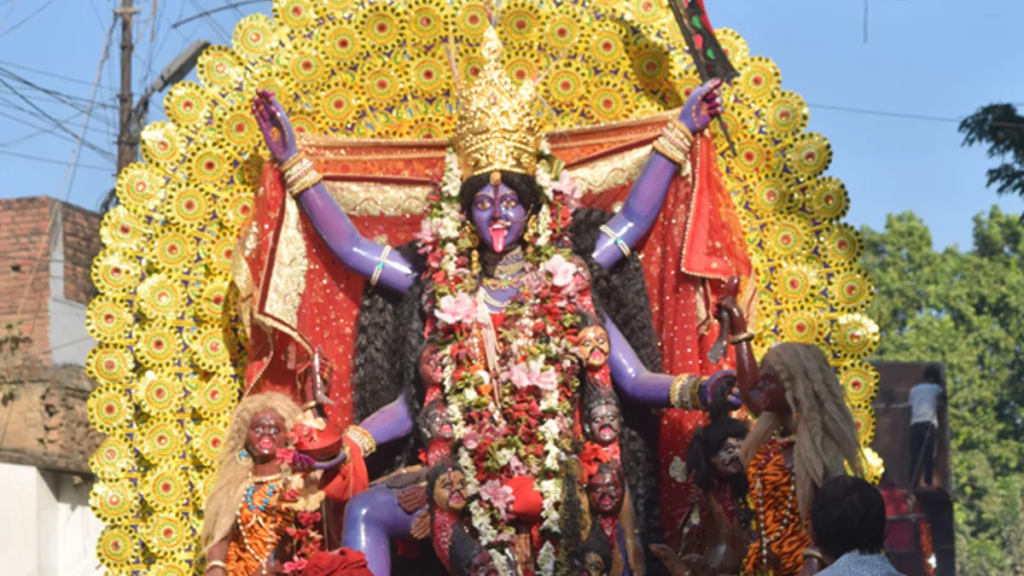
This vibrant festival not only showcases the deep spiritual devotion of the community but also celebrates the city’s intangible cultural heritage. Kali Puja embodies the essence of Bhagalpur’s traditions, making it a unique cultural spectacle in the region.
Sati Behula: Myth and Legacy
The legend of Sati Behula is rooted in medieval Bengali literature and immortalized through the epic tale of Manasa Mangal. This timeless story narrates the devotion and pious love of Behula for her husband, Lak hander, against the trials posed by Goddess Manasa.
The story is deeply tied to Champa Puri, the historical capital of the Anga kingdom, located in present-day Bhagalpur district. Evidence of the legendary metal house built by Vishvakarma, as narrated in the tale, is said to resurface during heavy rains, further intertwining myth with reality.

Buddhinath Temple: A Sacred Abode on the Banks of Ganga
The Buddhinath Temple, one of the 108 Nath Temples referenced in Shiva Purana, stands majestically on the banks of the Uttarvahini Ganga River. Spanning three acres, the temple is one of the region’s oldest religious sites, attracting devotees throughout the year.

Known as Baba Bal Vridheshwarnath, the temple’s self-incarnated Shivalinga remains an enigma, with its origin shrouded in mystery. The nearby idol of Ma Bhavani adds to the temple’s spiritual aura. The tranquil setting and its sacred significance make it a must-visit for pilgrims and travelers alike.
Shri Champapur Digamber Jain Temple: The Historic Jain Teerth Kshetra
Champapur, an ancient Jain pilgrimage site, holds immense religious significance. It is here that Bhagwan Vasupujya, the 12th Jain Teerthankar, experienced all five auspicious events (Kalyanaks) of his life, from birth to liberation.
Historically, Champapur served as the capital of Anga Janpada during the era of Bhagwan Mahavir Swami. The Main Temple of Champapur, approximately 2,500 years old, is symbolic of Jainism’s rich legacy. It boasts five altars, a magnificent spire, and two remaining Columns of Fame (Keerti Stambha) that are about 2,200 years old.
This sacred site stands as a testament to Bhagalpur’s historical and religious importance.
Khanqah-e-Shahbazian: A Revered Sufi Shrine
Established in 1577 AD, the Khanqah-e-Shahbazia is a prominent Sufi shrine and an enduring symbol of peace and spiritualism. The site houses the grave of Maulana Shahbaz Rahmatullah, one of the 40 revered Sufi saints.

This mosque, built under Mughal Emperor Aurangzeb, features a serene pond believed to possess medicinal properties, attracting visitors from India and Bangladesh. The Khanqah also holds a renowned library, with rare theological texts in Arabic and Persian, including a handwritten copy of the Qur’an by Murshid Quli Khan, the Nawab of Murshidabad.
Rivers of Bhagalpur: Lifelines of the Region
Bhagalpur, situated in the fertile plains of Bihar, is enriched by a network of rivers that define its geography and livelihood. These rivers not only support agriculture but also play a key role in shaping the region’s culture and economy.
Ganga River
The Ganga River, revered as the most sacred river in India, flows majestically through Bhagalpur. It nourishes the fertile lands and provides sustenance to millions of people in its vicinity. The river holds immense religious and cultural significance, making it a vital lifeline for the region.
Kosi River
Known as the “Sorrow of Bihar” due to its unpredictable floods, the Kosi River is another important waterway near Bhagalpur. Despite its challenges, the river is crucial for irrigation and sustains the local agriculture.
Ghaghara River
The Ghaghara River, often referred to as the Karmali River, flows through the region, adding to its water resources. Its banks support a diverse range of flora and fauna, making it ecologically significant.
Gandak River
Also called the Narayani River, the Gandak River is a tributary of the Ganga and flows through parts of Bihar, including Bhagalpur. It is essential for agriculture and provides water for irrigation in the region.
Chanan River
The Chanan River flows through Bhagalpur and the adjoining Banka district, forming the Chanan Basin. This basin is renowned for its production of Katarni Rice, a unique variety cherished for its flavor and aroma. The river is vital for the agricultural activities in the area.
Educational Hub of Bhagalpur
Bhagalpur is not only rich in natural resources but also a hub of educational institutions. It offers a blend of premier higher education institutions and schools, contributing significantly to the intellectual growth of the region.
Premier Educational Institutes in Bhagalpur
- Bihar Agricultural University (BAU), Sabour
A renowned institute specializing in agricultural research and education, BAU plays a pivotal role in revolutionizing farming techniques across Bihar. - Indian Institute of Information Technology (IIIT), Bhagalpur
Focused on information technology and computer science, IIIT Bhagalpur equips students with cutting-edge skills, fostering innovation in technology.

- Jawahar Lal Nehru Medical College & Hospital (JLNMCH), Mayaganj
As a leading medical college, JLNMCH provides quality education in medicine and healthcare, catering to the state’s growing healthcare needs. - Tilka Manjhi Bhagalpur University (TMBU)
Named after the great tribal freedom fighter Tilka Manjhi, TMBU offers a variety of undergraduate and postgraduate programs, making it a cornerstone of higher education in the region. - Bhagalpur College of Engineering (BCE)
Known for its excellent engineering programs, BCE nurtures young minds in diverse technical fields. - Central Institute of Petrochemicals Engineering and Technology (CIPET-CSTS)
CIPET Bhagalpur focuses on training and technical education in petrochemicals and polymer engineering.
Proposed Institutions
Bhagalpur’s educational infrastructure is set to expand with the proposed establishment of the Vikramshila Central University, further elevating the city as an educational hub.
Notable Schools
- St. Paul’s School, Nathnagar
- Mount Assisi School
- Mount Carmel School
- D.A.V. Public School
- Saint Joseph’s School
These schools provide quality education and serve as foundations for nurturing young talent in Bhagalpur.
Media in Bhagalpur: A Hub of Information and Entertainment
Bhagalpur is well-connected through various forms of media, ensuring its residents remain informed and entertained. From traditional print to modern telecommunications, the city hosts a diverse array of media outlets.
Print Media
Bhagalpur is served by prominent newspapers across multiple languages. Popular Hindi dailies include Dainik Jagran, Dainik Bhaskar, Hindustan, Aaj, and Prabhat Khabar. Urdu newspapers like The Inquilab and Taasir cater to the Urdu-speaking population. English newspapers, such as The Times of India, The Telegraph, and Hindustan Times, are also widely available.
Broadcast Media
The city offers excellent radio coverage through:
- All India Radio (AIR): Medium Wave frequencies of 1458 kHz and 1206 kHz.
- Radio Active (90.4 FM): Bhagalpur’s local FM station.
- AIR FM Rainbow India (100.1 FM): National FM service with diverse content.
Additionally, television networks like Sadhna Plus News Channel provide news and entertainment to residents.
Telecommunications and Broadband Services
Bhagalpur boasts robust telecommunications connectivity with leading providers such as BSNL, Airtel, Vodafone Idea, and Reliance Jio. Broadband services by Airtel, Jio, BSNL, and Sify ensure high-speed internet for businesses and households in the region.
Notable Personalities of Bhagalpur
Bhagalpur is home to many influential individuals who have excelled in diverse fields, leaving an indelible mark on society.
Artists, Writers, and Academicians
- Ashis Nandy: Renowned political psychologist and social theorist.
- Balai Chand Mukhopadhyay (Banaphool): Celebrated Bengali writer and physician.
- Nandalal Bose: Revered artist and pioneer of modern Indian art.
- Saratchandra Chattopadhyay: Famed Bengali novelist; his novel Srikanta draws inspiration from Bhagalpur.
Politicians and Administrators
- Bhagwat Jha Azad: Former Chief Minister of Bihar.
- Syed Shahnawaz Hussain: Prominent BJP leader and former Union Minister.
- Ajit Sharma: Current Member of the Bihar Legislative Assembly.
Cinema and Entertainment
- Ashok Kumar: Legendary Hindi film actor.
- Neha Sharma and Aisha Sharma: Bollywood actresses with roots in Bhagalpur.
- Gurmeet Choudhary: Popular television actor and model.
Freedom Fighters and Reformers
- Tilka Manjhi: The first Santhal tribal leader and freedom fighter against British rule.
- Anand Mohan Sahay: Close aide of Netaji Subhas Chandra Bose and diplomat in the Indian National Army (INA).
Academia and Research
- B. J. Choubey: Renowned professor at Tilka Manjhi Bhagalpur University.
- Kadambini Ganguly: One of India’s first women graduates and doctors, born in Bhagalpur.
Other Prominent Figures
- Raveesh Kumar: Former spokesperson of the Ministry of External Affairs; currently Indian Ambassador to Finland.
- Pritish Nandy: Poet, filmmaker, and television personality.
Prominent Institutions and Offices in Bhagalpur
Bhagalpur serves as a regional center for several government and commercial institutions, contributing to its administrative and economic prominence.
Regional and Zonal Offices
- India Post East Region
- Zonal Accounts Office, CBDT
- Airtel Zonal Office
- Employees’ Provident Fund Organisation (EPFO) Sub-Regional Office
Banks and Financial Institutions
Major banks operate regional offices in Bhagalpur, including:
- State Bank of India
- Union Bank of India
- Punjab National Bank Circle Office
- Bank of India
Government and Public Sector Units
- Bihar Industrial Area Development Authority (BIADA)
- Regional Forensic Science Laboratory
- Environment and Forest Division
These institutions not only cater to Bhagalpur’s local administration but also enhance its strategic significance in Bihar’s governance.

